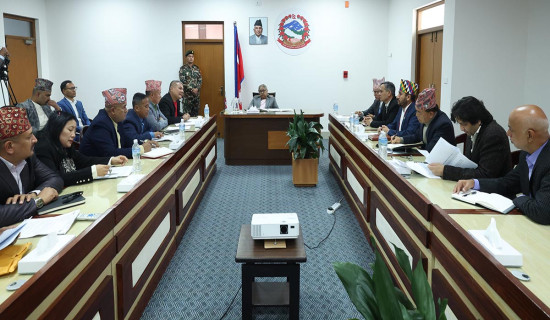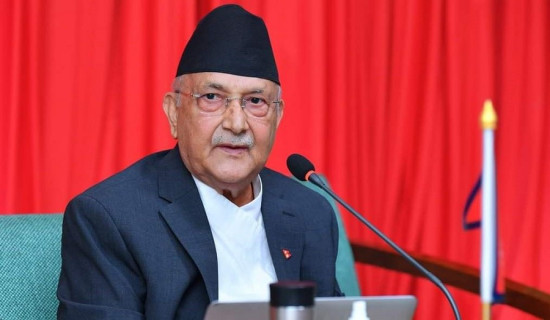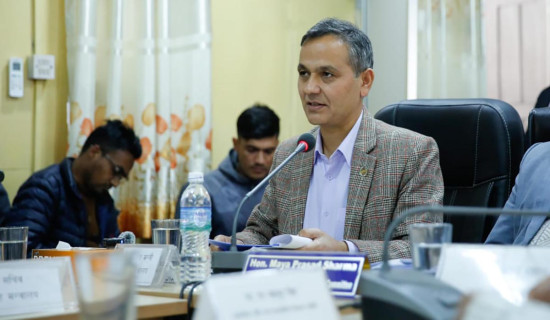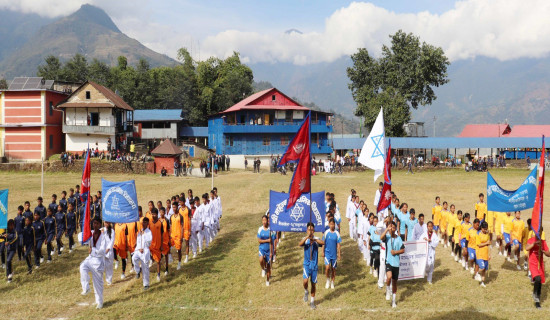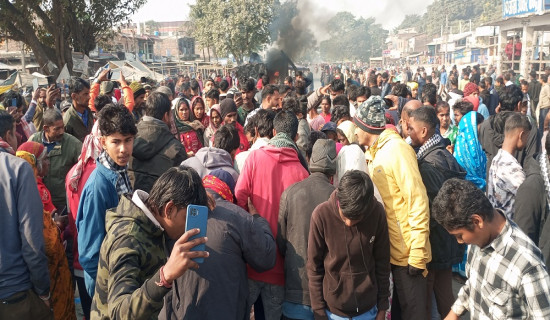- Thursday, 1 January 2026
Curb Scourge Of Human Trafficking
As per a news item carried by this daily on September 15, two women from Banke were trafficked to India and forced into the surrogacy business. They were held hostage and after giving birth to someone’s babies, they were returned to Nepal. This is a relatively new dimension of human trafficking. Human trafficking is cruel treatment meted out to people – men, women or children. Human traffickers often lure people with lucrative economic opportunities and force them into undesirable activities against their will. Men may end up doing forced labour, while children may wind up landing in circuses. On the other hand, girls and women may find themselves in prostitution, domestic servitude and even in the adult film industry.
Many girls and women living in the rural or remote areas of Nepal often fall victim to human trafficking. Human traffickers target girls and women from marginalised communities. Being poor, illiterate and compelled to eke out a living, girls and women are often in search of better economic opportunities. Gender-based violence, caste-based discrimination, child sexual abuse and the like also increase their vulnerability to human trafficking. Further, natural disasters may induce displacement, rendering many people homeless and foodless. Human traffickers take advantage of such a predicament the disaster victims are in.
False promises
Human traffickers dangle false promises of lucrative jobs before gullible people. Being uneducated, innocent and naïve, they often rise to the bait. Nowadays, human traffickers use mobile phones and social media to lure their victims. As there are limited job opportunities in the country, they easily fall into the trap laid by them. Migration from the country to foreign countries for employment has been continuing for years. Most of the migrant workers are not aware of their rights in destination countries. Nor are they cognizant of the laws prevalent there. Some migrant workers are sent abroad through illegal channels. They are not registered on the government’s records. They are a vulnerable lot.
The country has an open border with India. Many people are sent abroad through India. The records of such migrant people are hardly available. Migrant workers are employed in work without work permits, which increases their vulnerability to human trafficking. In fact, human traffickers target such unregistered migrant workers. Human traffickers lure girls and women with lucrative domestic work and work in the entertainment sector in the Middle East, Malaysia, Myanmar, South Korea, sub-Saharan Africa and other countries. They may also carry their victims to European countries and Australia on tourist, student, marriage or work visas.
Human traffickers from China and possibly other countries lure their victims with false promises of lucrative jobs and force them into cyber scam operations and other illegal activities abroad. It is reported that there is also internal human trafficking. Women and girls are lured with better jobs and forced to work in cabin bars, dance bars, dohori restaurants, massage centres and other places in the urban and semi-urban areas of the country.
As per government estimates, there are 1.5 million Nepalis working in the Middle East, with most men working in the construction sector in Saudi Arabia, Qatar and the United Arab Emirates. Nepali girls and women are forced to work under oppressive conditions. They are unaware of their rights as well as the laws of their destination countries. Their ignorance, naivety and greed for earning money to better their economic conditions make them vulnerable to human trafficking. In 2019, the National Human Rights Commission estimated that 1.5 million Nepalis were vulnerable to human trafficking. As per law enforcement data, girls and women 11 to 25 years old are at high risk of being trafficked to other countries. And unregistered migrant workers landing in third countries via India are also vulnerable to forced labour or sex trafficking.
As a matter of fact, human trafficking is a global phenomenon. The government is also aware of this. The government has been working towards eliminating human trafficking, notching up some headway on the anti-trafficking front. The government has embarked upon several measures to prevent human trafficking. A policy of allowing previously unregistered migrant workers to regain legal registration to work in foreign countries may be considered one of the deterrents to human trafficking. Human traffickers often target unregistered migrants.
Marriage visa
There are several organisations like Maiti Nepal working in the anti-trafficking domain. They take the initiative in rescuing Nepalis undergoing hardships in foreign countries. There are several instances of rescuing Nepali girls and women from brothels in India. Curbing human trafficking is a daunting task. On the one hand, there is an open border with India. Nepali victims are easily taken to India through the porous border. From India, they are taken to third countries. On the other hand, the victims are taken to foreign countries on various visas. Some human traffickers falsely marry Nepali women and take them to foreign countries on a marriage visa.
The network of human trafficking has spread far and wide. The government should embark upon an awareness campaign, especially in the rural or remote areas. The government should also initiate a livelihood campaign such as the development of cottage and small-scale industries and skill development programmes. It should sensitise parents to child rights so that they do not hand over their children to others to work somewhere. There should be a national data monitoring system and periodic surveys to take stock of the human trafficking situation. What is more, there should be harsher punishment for human traffickers. The government, anti-human trafficking organisations, NGOs/INGOs, civil society organisation, other stakeholders and the general public should work in tandem to extirpate the inhuman crime of human trafficking.
(Maharjan has been regularly writing on contemporary issues for this daily since 2000.)









-original-thumb.jpg)
